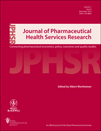Prevalence and therapeutic intensity of dispensed drug groups for individuals with multiple medications: a register-based study of 2.2 million individuals
Abstract
Objectives To assess the prevalence and the therapeutic intensity of dispensed drug groups for individuals receiving multiple medications.
Methods The individual-based data of all dispensed outpatient prescriptions in Sweden in 2006 were analysed. Five or more dispensed drugs (DP ≥ 5) during a 12-month period were applied as an indicator of multiple medications. The drugs were categorized according to the second level of the World Health Organization's Anatomic, Therapeutic, Chemical classification. The defined daily dosage per individual during 12 months was applied as an indicator of the therapeutic intensity.
Key findings For the 2.2 million individuals with DP ≥ 5, the drug groups with the highest prevalences were antibacterials (48.2%), analgesics (40.3%), psycholeptics (35.9%), antithrombotic agents (33.4%) and beta-blocking agents (31.7%). As examples, the level of prevalence increased with age for analgesics, psycholeptics, antithrombotic agents and diuretics, and decreased with age for antibacterials, drugs for obstructive airway diseases and antihistamines for systemic use. Substantial differences in the level of prevalence between women and men were observed for several drug groups; for example, thyroid therapy (13.3 vs 3.6%), psychoanaleptics (26.3 vs 18.2%), drugs used in diabetes (9.1 vs 15.7%) and lipid-modifying agents (18.1 vs 30.7%). Generally, the therapeutic intensity increased with the increasing number of dispensed drugs. For a third of the most common drug groups, the therapeutic intensity increased with an increasing age above the 60–69-year age group.
Conclusion The number of drugs taken not only increases the potential risks associated with multiple drug use, but also increases the potential burden of an increased therapeutic intensity, especially for older people. The reported findings may enlighten physicians and healthcare stakeholders concerning the complex patterns of multiple drug use in the entire population and the associated expenses. The findings may also be used as a base for interventions aiming to bring about the most appropriate and balanced prescription of medicines to individuals with multiple diseases.




